How To List Item From Drawing For Estimates From Contractors
Whether you are a holding owner or a contractor, you want to have a clear and accurate forecast of how much a building projection will cost and how long information technology will accept before you lot brainstorm.
In this guide, y'all'll become an in-depth expect at the basics of construction cost estimating, including how it fits into the construction process and what tin can cause costs to rise unexpectedly. We will besides look at the major types of construction contracts, best practices, pitfalls for estimators, the use of historical data, and estimation software.
Structure Cost Estimation Background and Purpose
Construction toll estimating is the procedure of forecasting the cost of building a physical construction. Of course, builders and clients both worry almost the financial touch on of cost overruns and failing to complete a projection. That'south why they devote time and endeavour to estimating how much a project volition cost before deciding to move forrad with it. Clients considering big projects ofttimes seek multiple cost estimates, including those prepared by contractors and those calculated by contained estimators.
Project owners utilise toll estimates to decide a project'southward scope and feasibility and to classify budgets. Contractors utilise them when deciding whether to bid on a projection. You normally prepare estimates with the input of architects and engineers to ensure that a project meets fiscal feasibility and telescopic requirements.
A adept cost estimate prevents the architect from losing money and helps the customer avert overpaying. It'southward a core component of earned value management, a project management technique that tracks a projection's functioning against the full time and price approximate.
A proficient starting point is this structure computer template.
Download Construction Estimator Template
Excel | Word | PDF | Smartsheet
Creating a construction cost estimate is good practice for anyone who cares well-nigh how much their project will cost. You routinely practise cost estimates for all kinds of construction projects, from building new structures to remodeling.
Accurate estimates are especially critical for evolution projects, which take budgets and timelines closely linked to paying back lenders and generating revenue as early every bit possible. They are also essential for big civil projects or mega-projects because of their sizable scope and the potential involvement of public coin. On a mega-project, small miscalculations get magnified. In projects constructed with public funds, cost estimates increase accountability, provide transparency, and enhance trust in your ability to manage the project properly.
Declining to prepare a reliable price estimate tin can have disastrous results. One notorious example was the Marble Hill nuclear power plant in Indiana. The owner abandoned construction in 1984, seven years after information technology began. The Public Service Company of Indiana had completed the project simply halfway and spent $ii.v billion due to cost overruns.
Estimating the cost of whatever project with accented precision is impossible, and projects tin fail for unforeseen reasons. But a skilled estimator will account for as many factors as necessary — including such things every bit market place conditions — to create an authentic judge.
The accurateness of a cost guess relies on a number of things: the quality of the project programme; the level to which the figurer defines a projection; the experience and skill of the reckoner; the accuracy of toll data; and the quality of any tools and procedures the estimator uses.
Depending on the type and size of a project, likewise as the industry, cost estimation may fall to one individual or a team, and estimators may concord a number of different positions. For some construction projects, contractors and subcontractors prepare the cost estimates, though this is not regarded as all-time practice. At other times, the construction salesperson will exist responsible for creating an estimate. Architectural firms may take in-firm estimators, typically people who take on the estimator'south office in addition to their primary role. Increasingly, all the same, qualified independent estimators handle estimates confronting which one verifies the contractor's estimates.
For contractors, good cost estimates win jobs. Customers commonly select the lowest bid that meets the standards and specifications they set. In a competitive behest state of affairs, the time and effort you spend preparing the judge are a cost of doing business and an investment in winning the job. If urgency is a factor for a project, the speed at which you gear up a bid can besides be a differentiator.
Transform structure management with Smartsheet. Run into for yourself.
Smartsheet enables you lot to rails each project with its own defended project canvas and go a unified view across all projects in a dashboard. Monitor tasks across projects and capture on-site issues through a unproblematic form on desktop or mobile.
Watch a free demo
Overview of the Construction Interpretation Process
Agreement price interpretation requires you lot to have a basic grasp of the construction process. (If you're interested in learning more than almost the construction process, Pearson's Edifice Structure: Principles, Materials, and Systems is an excellent resources.) Hither are the nine basic phases of a building project:
1. Commissioning a Projection: Commissioning is substantially a verification process that ensures a builder designs, constructs, and delivers a project according to the owner'southward requirements. Information technology begins early in the construction process and can last until up to a year of occupancy or use. A commissioning provider carries out commissioning, ordinarily a firm with feel in commissioning buildings that serve item functions.
ii. Determining Requirements: The outset existent footstep in constructing a project is a pre-design phase or planning phase. The pre-pattern phase involves defining a project's requirements: what its role(southward) will be, how much information technology should toll, where it will exist located, and any legal requirements it must comply with.
3. Forming a Design Team: The project owner contracts with an architect who volition then select other specialized consultants to form a design squad. Complex projects and projects which require meeting specific design requirements — such as acoustics or housing chancy materials — will take more specialized consultants on board to ensure the blueprint meets requirements. The architect is generally responsible for overseeing and coordinating the design process, though for some projects (such as industrial construction), an engineer may be one of the people overseeing design.
iv. Designing the Construction: This step deals with the architect creating a series of designs. The architect works commencement with the owner to decide on the broad strokes of the design and and so increasingly closely with the other members of the pattern team to mankind out the structure's design in accordance with requirements. Designing thus progresses from a schematic design stage, when the architect presents a high-level blueprint to the owner for approval, to a design development phase, when the architect works with the design consultants to decide on specifics of the structure design. The last footstep is the construction documents phase, i.east., creating construction drawings and specifications from which the contractor will build. The specifications, which various participants in the construction procedure read, appear in a standard format called the MasterFormat, which the Construction Specifications Institute adult. Estimators produce and revise cost estimates for the project every bit the architect fleshes out the pattern.
5. Bidding Based on the Scope of Work: In one case the structure documents are finalized, they are released to contractors who wish to bid on the project. Forth with these bidding documents, they include instructions on how to submit bids, a sample of the contract understanding, and financial and technical requirements for contractors. These documents, which effectively define the scope of the work, are the ground on which contractors fix their estimates. For more on how to develop a argument of work, consult this guide. To ensure fair behest, all contractors receive the same information, and the projection owner usually selects the lowest qualified applicant. This bid tabulation template tin help you compile your estimate.
Download Bid Tabulation Template
Excel | Smartsheet
Download Abstract of Bids Template
Excel | Smartsheet
half-dozen. Signing the Contract: Once the contractor has been selected, they execute a set of contract documents with the owner. The contract documents cover the bidding documents, which now office as a legal contract between owner and contractor. Contracts can follow a number of models, depending on how complete the construction design is and how the owner and contractor carry risks. I of the basic models is a lump sum (also chosen a stipulated sum or turnkey) contract, which involves the contractor behest a fixed sum for the total projection and agreeing upon it when the project's design is virtually complete. A unit of measurement price contract allows for more flexibility in pattern by having the possessor pay the contractor per number of units they build. A cost-plus contract, signed when the design is incomplete, has the owner pay for all costs plus a predetermined fee for the contractor. A variation of this is toll plus a fee with a guaranteed maximum.
vii. Construction: During the construction phase, the contractor oversees building in accordance with the structure documents. A general contractor will hire specialized subcontractors for dissimilar sets of construction tasks, such equally plumbing or foundation work. Throughout the construction procedure, the contractor engages in conscientious cost command, comparing bodily expenditure with forecasted expenditure at multiple points in the structure process. Toll control ensures that the contractor is actually able to plow a turn a profit. This budget template can help yous compare bodily costs to estimated costs.
Download Construction Budget Template
Excel | Smartsheet
8. Close-Out: When the builder comes close to finishing a structure, the contractor requests the builder perform a substantial completion inspection in which the architect verifies the most-consummate condition of the project. At this stage, the contractor provides the architect with a certificate chosen the punch list, which lists whatsoever incomplete work or needed corrections. After the architect inspects the structure, they will add together whatsoever additional incomplete items to the punch list.
Consult these templates for a projection close-out checklist and punch-list template.
Download Structure Punch List Template
Excel | Smartsheet
Download Project Closeout Checklist Template
Excel | Smartsheet
This template will help you keep track of contractor progress payments.
Download Contractor Progress Payment Template
Excel | Smartsheet
nine. Completion: Afterward the contractor completes all the incomplete piece of work detailed on the punch list, the architect performs a concluding inspection. If the contractor has completed the structure according to construction drawings and specifications, the builder will issue a certificate of final completion, and the contractor is entitled to receive the full payment.
An alternative method of project commitment is the blueprint-build process, which integrates building design and edifice structure. Instead of contracting first with a pattern team and then with a contractor, the owner contracts with a design-build business firm, which handles both functions. The main strength of this approach is greater alignment and coordination between design and structure and a reduction of construction missteps. Accountability rests with a unmarried political party, which owners may capeesh. It can as well salve time and increase efficiency, and pattern-build processes are probable to be significantly cheaper than conventional blueprint-bid-construct processes like the ane detailed above.
The Primary Types of Structure Price Estimates
Since a cost estimate can but be accurate with a well-defined projection plan, information technology's standard practice to create multiple estimates during the pre-design and design phases. These go more accurate every bit the project'south level of definition increases. The American Society of Professional Estimators classifies estimates according to a 5-level system that becomes increasingly more detailed and reliable. (Construction cost estimating has a lot in common with cost estimating for other types of projects, and you can read more nigh key concepts and tips in this article.)
- Level 1: Society of Magnitude Guess: Made when project pattern has non yet gotten under way, you only use an lodge of magnitude estimate to determine the overall feasibility of a construction.
- Level 2: Schematic Design Estimate: An judge produced in line with schematic design
- Level 3: Design Development Guess: An approximate fabricated during the design development phase
- Level 4: Construction Document Estimate: An gauge based on the construction drawings and specifications
- Level 5: Bid Gauge: An estimate prepared past the contractor, based on structure documents. The bid estimate is the basis of the bid price offered to the client.
A simpler arrangement of classifying estimates features but iii chief categories: design estimates, bid estimates, and command estimates. These category names reflect the manner in which you utilize the estimates.
- Design Estimates: These estimates, prepared during a project's pre-design and blueprint phases, outset with an order of magnitude judge, or screening estimate, which determines which construction methods and types are near feasible. Next comes the preliminary approximate, or conceptual estimate, which you base on the schematic design. Then comes the detailed estimate, or definitive guess, which yous base on design development. The last of the pattern estimates is the engineer's estimate, which you base on the structure documents. A simple template tin can help give an initial assessment of costs involved in a project.
Download Constructor Figurer Template
- Bid Estimates: Contractors fix bid estimates when bidding to construct the projection. Contractors volition depict from a number of data points to prepare their estimates, including direct costs, supervision costs, subcontractor quotes, and quantity take-offs. (We'll expect at these in more than detail shortly.)
- Control Estimates: Prepared afterward ane signs a contractor agreement and before construction gets under manner, the command estimate functions as a baseline by which yous assess and control bodily construction costs. The control gauge too allows contractors to plan ahead to run across upcoming costs and determine the project'due south price to completion.
A Construction Price Estimates Perspective on Building Systems
Creating a toll estimate for a project equally complicated as a edifice calls for a systematic style of enumerating costs. To simplify the process, toll estimators may use the Uniformat system of viewing a building as a set of seven functional divisions. These are:
- Substructure
- Shell
- Interiors
- Services
- Equipment and furnishings
- Special construction
- Building site piece of work
The RSMeans Foursquare Foot Costs Book, which compiles edifice cost data according to these divisions, is a widely used resource for developing price estimates based on costs per foursquare foot.
Contractors who are bidding for a job will create a document called the bill of quantities, which is an itemized list of the work and materials required for a construction project. This is a crucial step in determining the toll of the work before behest. Creating a beak of quantities is a four-stride process that used to be washed painstakingly by hand on paper and is at present usually washed with spreadsheets or specialized software.
- Taking-Off Quantities: Working from the construction documents, a quantity surveyor will measure the tasks and items of work in a project. This requires scaling dimensions from drawings. 1 volition tape these in standard units such equally area, book, or length. For example, you tin can quantify excavation in cubic meters and steel supports in linear anxiety. It's important to follow one of the standard methodologies, such as the New Rules of Measurement. The surveyor will list the number of each item in the project.
- Squaring: Next, the quantity surveyor multiplies the dimensions of the component into square area and multiplies this past the number of times this work particular occurs in the construction, thus getting the total dimensions, length, book, and area every bit applicable.
- Abstracting: Abstracting is the collecting and ordering of the squared dimensions. Similar tasks and components are grouped together. Once you have taken off and squared all items and have obtained full dimensions, they must be merged. You lot make deductions for any voids or openings in the building, such as stairs.
- Billing: This concluding step only involves presenting item descriptions and quantities in a structured format, the pecker of quantities. Yous commonly nowadays these in a bureaucracy for group, subgroup, and work section. (Examples include substructure, earthwork, and site clearance.)
The Elements of a Construction Toll Judge
So what information do estimators utilize to create an estimate? The following are key terms and concepts, merely be aware that there'due south a big caste of overlap between some of them.
- Quantity Accept-Off: Developed during the pre-construction phase, a quantity take-off measures the materials and labor needed to complete a project.
- Labor Hr: The labor hour, or man hr, is a unit of measurement of work that measures the output of 1 person working for one hour.
- Labor Rate: The labor rate is the corporeality per hr one pays to skilled craftsmen. This includes not just the basic hourly charge per unit and benefits, just the added costs of overtime and payroll burdens, such as worker compensation and unemployment insurance. This template volition help you go along track of wages and labor hours.
Download Certified Wage and Hour Payroll
Excel | PDF | Smartsheet
- Material Prices: Since the toll of materials is prone to fluctuation based on market weather and such factors as seasonal variations, toll estimators may look at historical cost data and the various phases of the buying wheel when calculating expected cloth prices.
- Equipment Costs: Equipment costs refer primarily to the cost of running, and possibly renting, heavy machinery, such every bit cement mixers and cranes. It's important to annotation that the equipment in use influences how quickly you tin can consummate the project, so the use of equipment actually impacts many costs outside of those directly associated with running the equipment.
- Subcontractor Quotes: Virtually contractors will rent multiple specialist subcontractors to complete parts of the structure. You add these subcontractors' quotes to the contractor'southward total approximate. (Information technology can be helpful to use a tracker to collect all the subcontractor documentation in one place.
Subcontractor Documentation Tracker
Excel | Smartsheet
- Indirect Costs: Indirect costs are expenses not directly associated with construction work, like authoritative costs, transport costs, smaller types of equipment, temporary structures, design fees, legal fees, permits, and any number of other costs, depending on the particular project.
- Profits: Of form, in club to make a turn a profit, the contractor adds a margin on to the cost of completing the work. Subcontractors do the aforementioned when preparing their own quotes.
- Contingencies: Since even the most accurate estimate is likely to be afflicted by unforeseeable factors, such as materials wastage, an estimate will usually have a predetermined sum of money built in to account for such added costs.
- Escalation: Escalation refers to the natural inflation of costs over time, and it'southward especially vital to take into account for long-running projects. Some projects have escalation clauses that accost how to handle this aggrandizement.
- Bonds: An possessor will normally require a contractor to adapt for the issuance of a operation bail in favor of the project possessor. The bond functions as a kind of guarantee of delivery. Should the contractor neglect to complete the project according to the terms of the contract, the possessor is entitled to bounty for monetary losses up to the amount covered by the performance bond.
- Capital Costs: Upper-case letter costs are simply the costs associated with establishing a facility. These include the post-obit: the cost of acquiring land; the cost of conducting feasibility studies and the pre-design phase; paying the architect, engineer, and specialist members of the design team; the total cost of structure, which covers non simply materials, equipment, and labor, only as well administrative, permitting, and supervision costs, likewise equally any insurance fees or taxes; the cost of any temporary equipment or structures that are non office of the final structure; the cost of hiring a commissioner; and the cost of inspecting the construction when it's virtually completion.
- Operations and Maintenance Costs: More a business organisation for the owner than the contractor, 1 accounts for operations and maintenance costs during the design phase. Making choices that lower the full lifetime cost of a building may event in higher construction costs. Operating costs include land rent, the salaries of permanent operations staff, maintenance costs, renovation expenses (as needed), utilities, and insurance.
- Variances: Owners will frequently classify construction budgets that are larger than toll estimates considering fifty-fifty good, thorough cost estimates have a trend to underestimate bodily structure costs. This can happen for a number of reasons. For example, wage increases, which can be difficult to forecast, will make structure costs rise. Seasonal or natural events, such as heavy rainfall, may telephone call for action to protect construction or restore the construction site. Large projects in urban areas may confront regulatory or legal issues, such every bit a demand for additional permitting. And lastly, owners who begin construction without finalizing the projection's design will over-upkeep to business relationship for design changes and the inevitable cost increases that issue from throwing a project off schedule.
Influences on Construction Costs
Naturally, the costs we've detailed in the previous department are annihilation but consistent from projection to project. In fact, so many factors tin influence these costs, that cost estimators recognize that every project is unique.
One of the primary factors that influences price is the building site. Waterlogged soils, previous construction, geological formations and the nature of the rock, native animal species, and the presence of historical or natural heritage sites are just a few of the things that can affect materials and labor requirements, delay the issuance of permits, and increase the time needed to consummate the project. Similarly, the location of the structure site relative to economic centers can as well be significant. Contractors may have to transport workers and materials for a long altitude if the site is remote. In a bustling urban area, the wages may be college. Furthermore, regulatory requirements may be stricter, and hence more expensive to fulfill or comply with, at some construction sites than at others. Lastly, sure structure sites require the completion of feasibility or impact studies, which are likely to prove expensive.
Time-related aspects can likewise affect costs significantly. Primary amidst these is the project schedule, every bit a compressed, labor-intensive schedule will incur higher costs and rush charges. Shorter projects, especially those with significant penalties for the contractor's failure to consummate the project on time, are also likely to have more expensive insurance. Too, with a project that y'all await to take years to complete, y'all volition near certainly take to consider fluctuating market weather and inflation. Finally, owners inviting bids may discover seasonal variations in bid amounts, since contractors are busier at some times of the year than at others.
The size and complication of the project are other major influences on cost estimates. Larger, more prestigious projects may attract more reputable contractors, or in that location may simply exist few firms capable of handling the project. Either of these scenarios can escalate projection costs.
The quality of plans and specifications are as well vital factors, as is the contractor's relationship with the project engineer. Construction documents that hint at imprecision will almost certainly result in higher bids from contractors who desire to err on the side of safety. On the other hand, the project engineer'southward reputation tin can swing costs the other style, since contractors volition know that plans drawn by a reputable engineer are less likely to result in efficiency losses.
Some other factors that bear on the project cost include whether a regime or quasi-governmental bureau commissions or funds the project, a circumstance which may require additional paperwork and reporting. Some big projects require the completion of a value-engineering review earlier bidding commences. Value engineering, which examines the function-to-cost ratio of a project, aims at making the design as toll efficient as possible.
Finally, all cost estimates add together at to the lowest degree a 10th, and sometimes closer to a 5th, of the construction full to business relationship for contingencies. Contingencies are allowances held in reserve for unexpected costs.
Using Historical Data in Structure Cost Estimates
When preparing a cost judge, an estimator usually relies, at least to some extent, on historical data. Though no 2 projects are exactly akin, using comparable historical cost and judge data can be an excellent way to validate estimates.
Historical data comes from a number of sources, including catalogs of vendor data, databases, periodicals, commercial references, and digests of actual project costs. Contractors may also look at successful past bids, assuming these proved accurate. Regardless of what data you utilize, it'south critical to have reliable data, and so experienced estimators recommend using a trusted industry standard source.
That said, you'll take to adjust almost all standardized cost data to local economies, and there's likely to be a considerable degree of cost fluctuation even between cities in the aforementioned region or country. You'll have to adapt most costs for inflation, depending on how onetime the data is.
Labor costs are especially variable. Based on the need for labor, the required level of skill, and the status of the structure site, which in turn hinge on such factors as the time of year, economical and market conditions, and the location of the structure site, an calculator will unremarkably take to adjust historical labor data when creating a new judge.
For contractors with successfully completed projects under their belts, comparing their actual cost information to their cost information reference can aid approximate the accuracy of the data reference. For example, a contractor who notices that their bodily materials costs are consistently five percent lower than those quoted in the data reference volition likely adjust materials costs in futurity estimates and then that they're about five percentage lower than those quoted in the data reference.
Nevertheless, skillful cost estimators will tend toward caution since cost estimates by and large underestimate the bodily cost of structure. Even with contingencies built into the gauge, factors such as design changes and unforeseeable economic conditions can quickly increase costs. Attempt these templates for keeping track of modify orders.
Download Alter Order Request Summary
Word | Smartsheet
Download Change Guild Log
Word | Smartsheet
It's worth remembering that both the contractor and the owner bear substantial risks when amalgam large projects. Contractors don't just stand to have their turn a profit margins cut and their reputations hit. Many cease upwardly declaring defalcation when it simply becomes likewise expensive to complete a project. And while owners shield themselves somewhat from financial losses through performance bonds and similar protections, the failure to complete a projection on time may result in financial damage due to lost potential profits or an inability to pursue a strategic program. Furthermore, those who don't complete authorities projects successfully are likely to injure the reputation of political leaders who backed them.
The Effects of Scale on Construction Toll Estimates
Cost estimators keep ane important phenomenon in mind when estimating quantities: costs are not always direct proportional to the size of a facility or the number of units one's building. If plotted on a graph, this miracle, known every bit an economy or diseconomy of scale depending on which manner the cost varies, would appear every bit a non-linear human relationship betwixt facility size and costs.
If the average price per unit falls as the number of units increases, nosotros have an economy of scale. If the boilerplate toll rises as the number of units increases, we have a diseconomy of scale.
The cost exponent is an indicator of whether a scale economy or diseconomy exists. For a discussion of how to calculate toll exponents in construction, consult Projection Direction for Structure. If the exponent is greater than cipher but less than one, an economic system of scale exists. If it is greater than one, a diseconomy of scale exists. If it is equal to one, the price-capacity relationship is unaffected by scale.
You tin can determine cost exponents using historical information from construction projects of the same type. One time calculated, you can use cost exponents to adapt futurity cost estimates depending on the scale of a projection.
The Major Approaches to Construction Price Estimation
Cost estimators rely on a number of interpretation techniques, which vary in speed and potential accuracy. The major approaches to cost estimating include:
- Production Function: A product function relates the corporeality built (the output) to factors such equally materials and labor (the input). So if you want to achieve a certain level of output (number of square feet congenital), yous expect for the optimal input (labor hours per square foot). Production functions can be quite accurate for forecasting input-output relationships for projects of a particular type, and in that location is extensive data to depict from for certain project types, similar schools and hospitals, for example.
- Stick Estimating: Highly authentic, but incredibly time consuming, stick estimating is the do of determining total costs by listing, in order, the costs for every single component of a job. The sheer amount of time it takes to produce a stick judge invites errors due to loss of concentration or carelessness.
- Empirical Cost Inference: This statistical method uses regression analyses to relate the cost of construction to a model of predictors. The accuracy of this method depends on the quality of the predictive model, so information technology calls for a good caste of familiarity with private predictors of full structure costs and a knowledge of statistical methods.
- Unit Cost Estimating: Unit cost estimating simply assembly unit costs with each assembly involved in a construction process. Information technology'southward fairly quick and authentic, specially if i has used the assemblies previously, and in that location is evidence to justify the unit costs for each associates.
- Resource allotment of Joint Costs: You lot allocate costs that are difficult to assign to individual project elements by using different mathematical formulas. For example, you can prorate field supervision proportionally to tasks based on their share of the total basic costs.
The Construction Cost Estimator's Job
Of course, the cost reckoner is central to the toll estimation process. Typically a professional who is familiar with both pattern and construction and skilled at navigating the myriad costs associated with construction projects, the cost estimator must accept both skill and training.
The U.S. Department of Labor's Bureau of Labor Statistics says in that location were 213,500 cost estimators in the country in 2014, with employment opportunities expected to grow by nine percentage over the adjacent decade. A plurality of these estimators work in the construction manufacture.
Essential skills for cost estimators include the ability to work quickly with numbers, an in-depth knowledge of construction, and familiarity with structure documents. On large projects, multiple specialist price estimators may exist responsible for estimating unlike aspects of the project, then a specialization or showtime-hand experience in amalgam sure types of structures can also be valuable.
Although tertiary education is typically a requirement for cost estimators, starting time-mitt feel with construction and a knowledge of the contracting mural are perhaps more than essential skills. Some estimators are individuals who have risen through the ranks every bit structure workers. These experienced construction professionals also know how to negotiate with subcontractors and may be improve able to capeesh the factors that affect estimated amounts.
But every bit construction has gotten more specialized, professionally trained cost estimators are increasingly common. A number of qualifications in cost estimation are bachelor, including the International Price Estimating and Analysis Association'south Certified Price Computer/Analyst programme,the American Club of Professional Estimators' Certified Professional person Computer certification, and the American Association of Cost Engineers' certifications for price consultants, cost engineers, and cost technicians. Most certification programs require standing education and recertification.
Dedication to connected learning is necessary for all cost estimators, whether certified or not. Information technology's key to keep abreast of the structure industry and also to exist able to learn and implement evolving cost interpretation methods and software, which we'll talk near before long.
In addition, price estimators must be highly organized and highly attentive to detail. They should know how to communicate cost information with accuracy and integrity. Moreover, given the competitive nature of the construction industry, they must maintain confidentiality when communicating with stakeholders and commit themselves ethically to delivering accurate estimates despite possible pressures to engage in corner-cutting and expediency.
Best Practices in Construction Cost Estimating and What Non to Do
Today, software applications make cost estimation easier, but the toll estimator'southward part remains every bit crucial equally ever. Some best practices can atomic number 82 to more accurate estimates and more than successful bids.
The cost estimator must follow industry norms and standards for measurement units. He must also consistently fill out costing-related documents, such every bit quantity surveys, and follow cost-recording procedures in a style that makes their work verifiable and like shooting fish in a barrel to handoff to some other price estimator if necessary. The all-time way to do this is in a recognized structure classification system, such as the UniFormat.
Identifying indirect costs is another key role of the price estimator's job, and it's to some extent a skill adult through experience. The computer examines contractual terms to see which of them may impact indirect costs. They're likewise responsible for calculating indirect costs and for coming upwards with a manner to tape these. Determining the level of effort — project work that cannot exist traced to specific components of a piece of work breakup structure — is also a skill that takes some developing. Estimating the labor hours necessary for completing project tasks affects the size of the workforce, workers' wages, and insurance.
The computer is responsible for evaluating subcontractors' bids, particularly taking into account the subcontractors' performance on by projects. They will review structure drawings for constructability and accuracy in representing the projection telescopic. They will appraise how the customer's schedule requirements touch the operation of the project. Their task may involve analyzing completed estimates for accuracy.
The toll estimator also helps runway costs in the field so as to let the comparison of actual costs with toll estimates. The idea is to see which areas of the guess were accurate, which weren't, and why. They're also responsible for determining the impact of change orders, so contractors and clients can determine if these are feasible. A skilled estimator volition provide as much detail as possible on the affect of alter orders.
Download Project Change Order Request Form
Ultimately, the price computer may take to do specialized skills, such equally value engineering science, which normally refers to increasing the function-to-toll ratio. Value engineering is usually a carve up study, and it'south critical to construction an gauge and so y'all can bandy out costs and assess the effect of value engineering. If you don't allocate costs to construction divisions in a format that'southward like shooting fish in a barrel to sympathise, gauging the impact of value engineering can go much more than difficult.
Common Pitfalls for Construction Toll Estimators
Experienced toll estimators say you lot can frequently avoid common pitfalls past consistently following standard procedures. 1 mutual source of issues is the failure to read the project documents advisedly, which often leads to a poor understanding of the projection scope and certain associated costs. Others include forgetting to comprise costs or entering costs incorrectly. These problems can be compounded by neglecting to thoroughly check the completed estimate.
Other oversights include the failure to visit the site and the inability to fully empathize the site conditions. As we talked nearly earlier, a site's natural conditions and location can bear upon costs in a number of ways, and a cost figurer volition develop an eye for spotting and asking almost these. This makes site visits imperative.
Finally, some cost estimators who draw from toll data repositories will fail to arrange costs based on local weather condition or volition brand capricious adjustments without considering prior experience or quantitative comparisons. Either of these tin throw estimates off and arrive more difficult for another cost estimator to verify an estimate.
Cost Estimating Applications and Software
Estimating applications make cost estimates faster and easier to produce, which is crucial in a construction market that'southward immensely competitive. They're as well more authentic than homo estimators working on their own, as long as you employ up-to-date cost information. Estimation software has become a must-have for anyone generating complex construction toll estimates.
Free cost estimating software is available, but information technology has limited functionality, and it's not really suitable for anything but smaller projects. For-purchase software, which can be pricey, is a much better choice for anyone dealing with complex projects because of the functionality and features it can offer. Hither are a few of the benefits of for-purchase software:
- Cost-Related Inputs and Processes: Estimating software can offer access to cost databases, calculate taxes and the costs of labor and materials, allow estimators to adjust prices to local contexts, feature standard-size room lists, too as particular or activity lists, and integrate with accounting software. Some offer worksheets for specific trades and calculators for standard costs.
- Generating Estimates: Estimating software can perform measurements and take-offs, count objects, allow estimators to mark upwardly construction drawings, and generate bills of quantities.
- Documentation: Estimating software offers templates for proposals and cover letters, generates proposals and cost reports, and maintains records of past projects.
- Other Features: Some software offers back up for macros, online collaboration, and the ability to integrate with calculator-aided design files.
New Aspects of Construction Cost Estimating
Construction price estimating continues to evolve as design, building methods, and materials modify. Some trends that affect toll estimating today include:
- Edifice Data Modeling (BIM): A edifice data model is a digital model of a construction and all its characteristics and dimensions. From the design to the construction, commissioning, and maintenance of a building, all participants can use the model. As such, there's an increasing demand for toll estimating to get an attribute of BIM, though this opinion has not been without challenges. The primary criticism of price estimating in BIM is that cost estimators, with some justification, have less conviction in the level of item of BIM designs. That lack of specificity tin can lead to substantial inefficiencies and reworking of estimates.
- Sustainability and LEED Certification: Currently something of a hot topic in construction, LEED certification is a betoken system for rating buildings based on their environmental functioning. The role of an estimator in projects seeking to obtain LEED certification involves both calculating the toll of scoring LEED points and communicating these to clients. These include not just direct costs (using environmentally friendly materials, for example), but as well increased authoritative costs for ensuring compliance with the LEED standards. Therefore, estimators in LEED projects should be involved during the construction design phase, so they tin contribute information about costs associated with specific LEED points.
- Lean Structure and Cost Control: Lean construction, a fairly new approach, draws from the principles of lean management, which is the systematic attempt to reduce waste matter without affecting productivity. Studies indicate that applying lean principles in construction projects results in significant cost savings. Every bit such, an understanding of lean principles is a good asset for toll engineers who apply principles of value applied science to construction projects.
Further Resources for Learning most Construction Toll Estimating
The following are boosted resource concerning construction cost estimating:
- Ibrahim Odeh's Coursera course on "Construction Cost Estimating and Price Command" is a popular introductory resources for construction management professionals.
- The Projection Direction Institute (PMI) offers manufactures on project estimating.
- The Society of Cost Estimating and Assay offers a glossary of cost-estimating related terms.
- The Majestic Plant of Chartered Surveyors hosts a variety of knowledge resource events for quantity surveyors, equally does the International Cost Engineering Council.
- The Association for the Advocacy of Cost Engineering International holds an annual coming together that addresses new issues in cost technology.
Smartsheet Helps You Manage Toll Estimates and Construction Projects with One Tool
Empower your people to get above and beyond with a flexible platform designed to match the needs of your squad — and adapt as those needs alter.
The Smartsheet platform makes it piece of cake to program, capture, manage, and study on work from anywhere, helping your team be more than effective and get more done. Report on central metrics and get existent-fourth dimension visibility into piece of work as information technology happens with curlicue-up reports, dashboards, and automatic workflows built to keep your team connected and informed.
When teams have clarity into the work getting done, at that place's no telling how much more they tin accomplish in the same amount of time. Try Smartsheet for free, today.
Source: https://www.smartsheet.com/construction-cost-estimating
Posted by: gaertnerlailled.blogspot.com

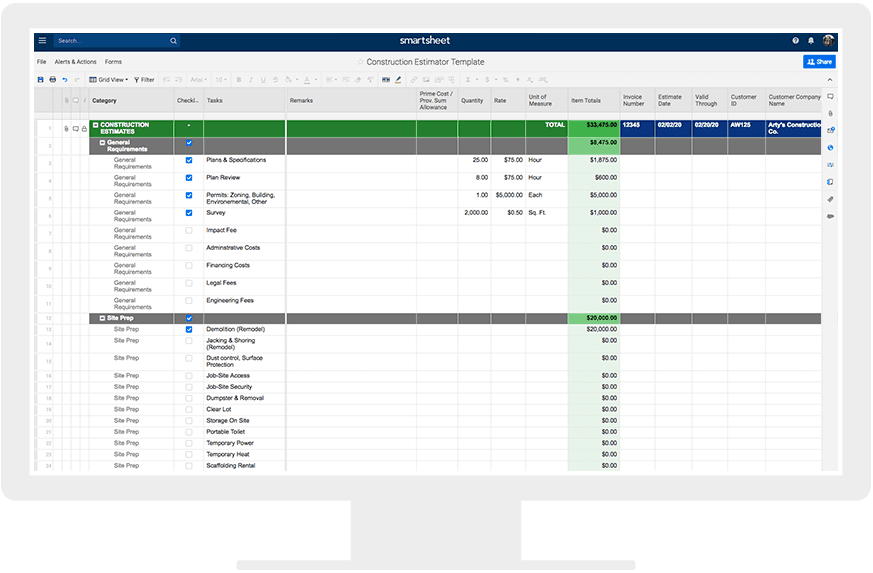
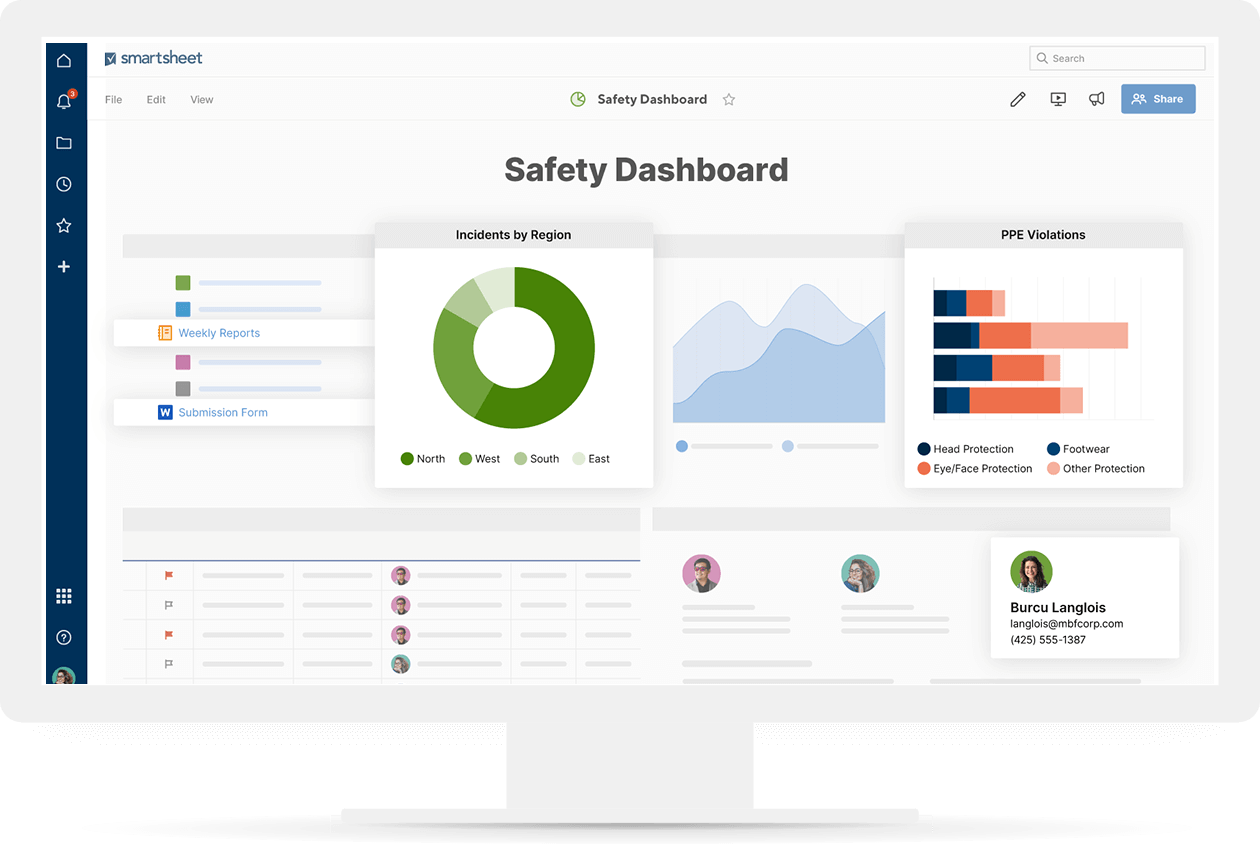
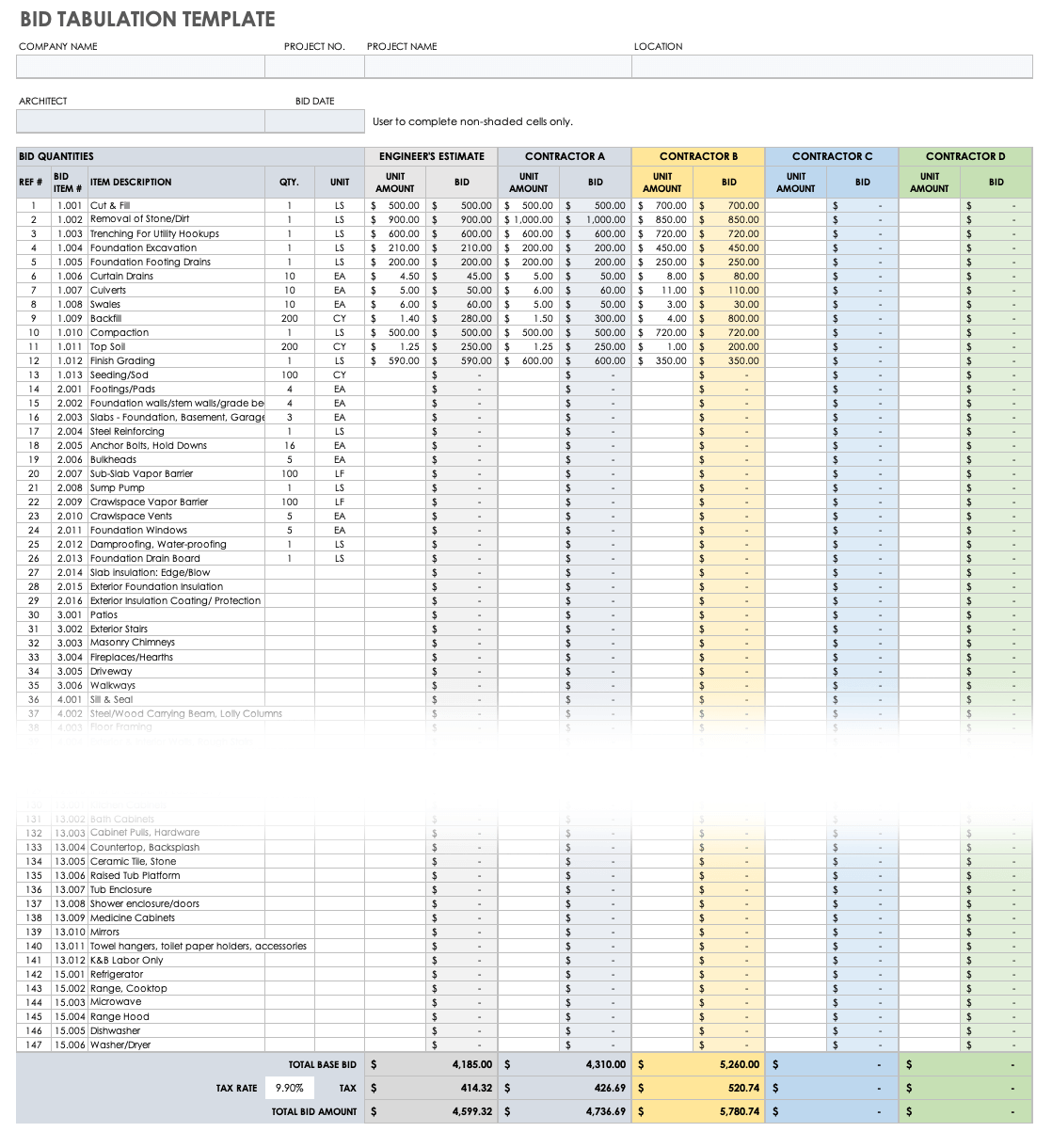
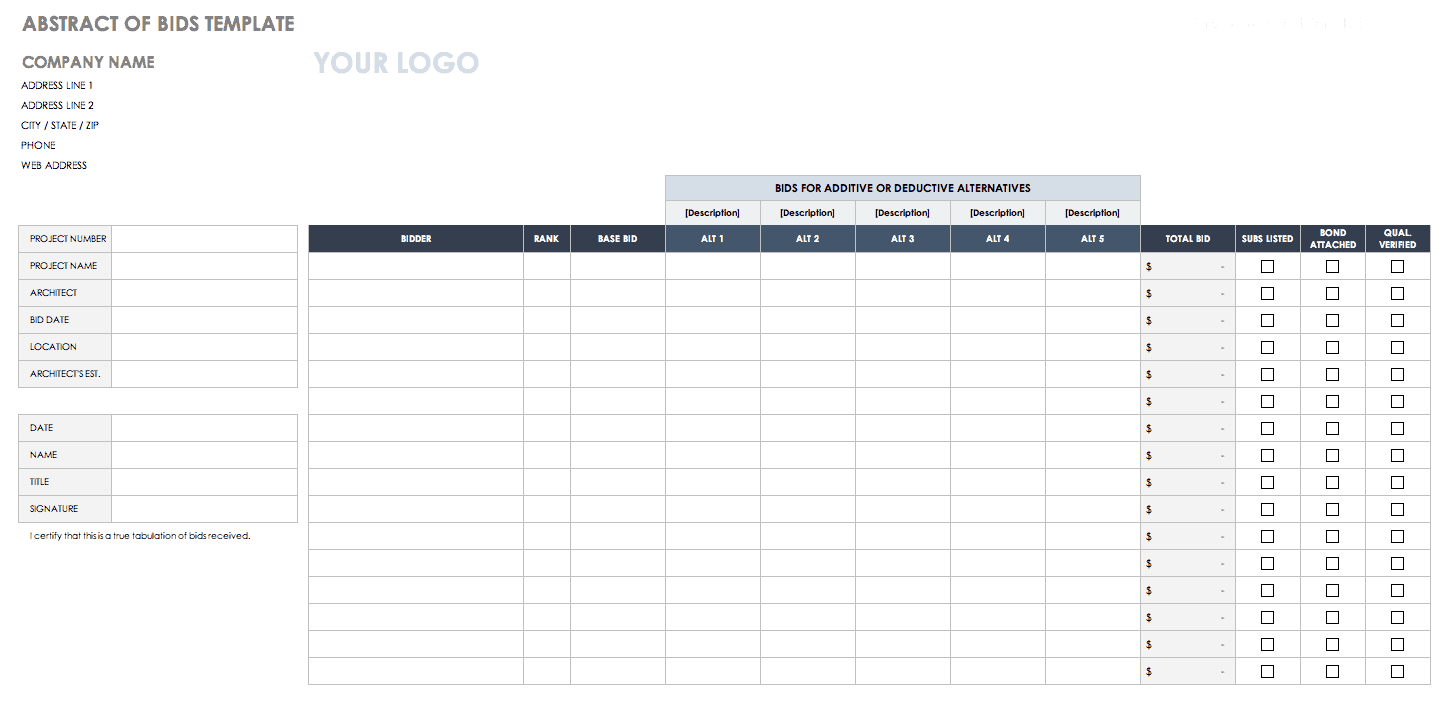
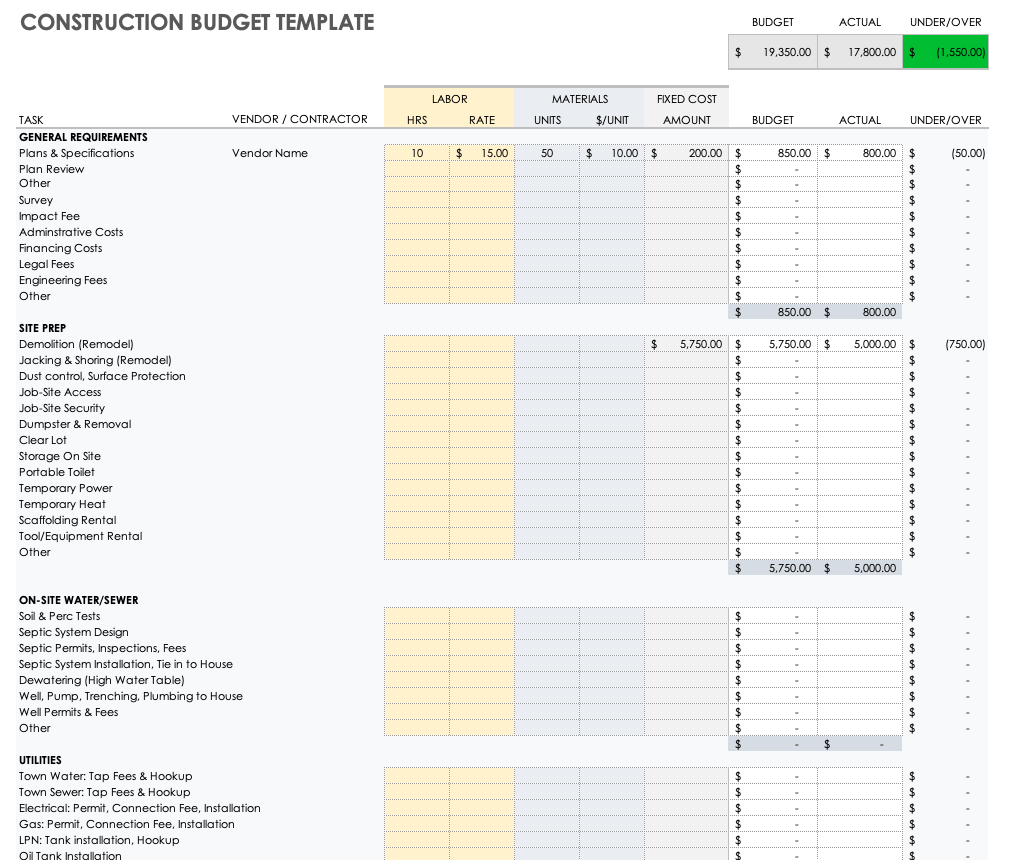
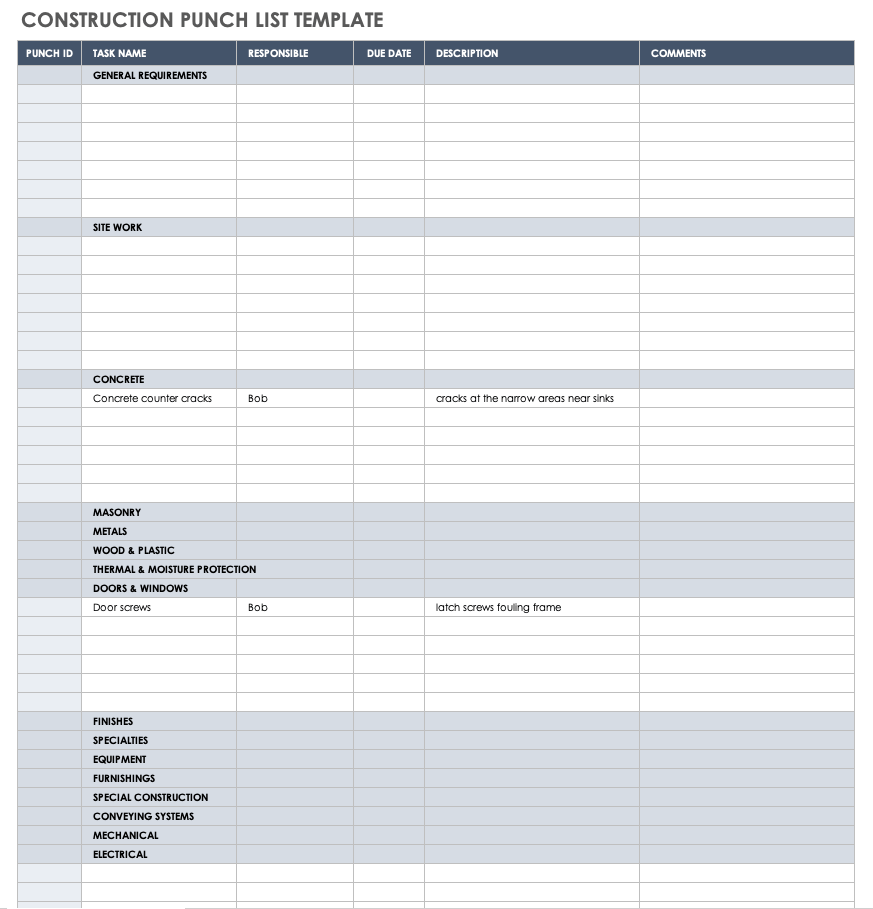

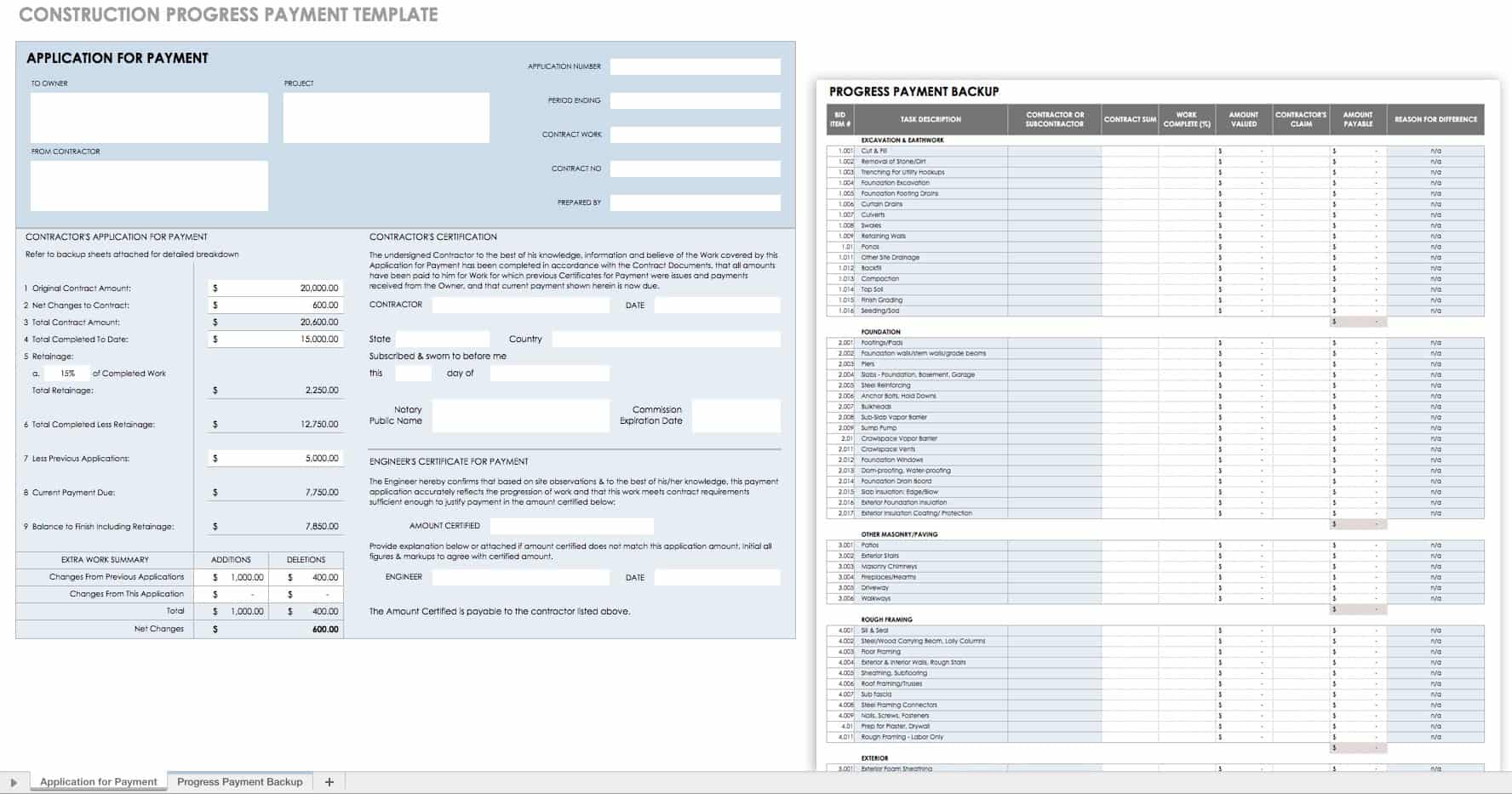
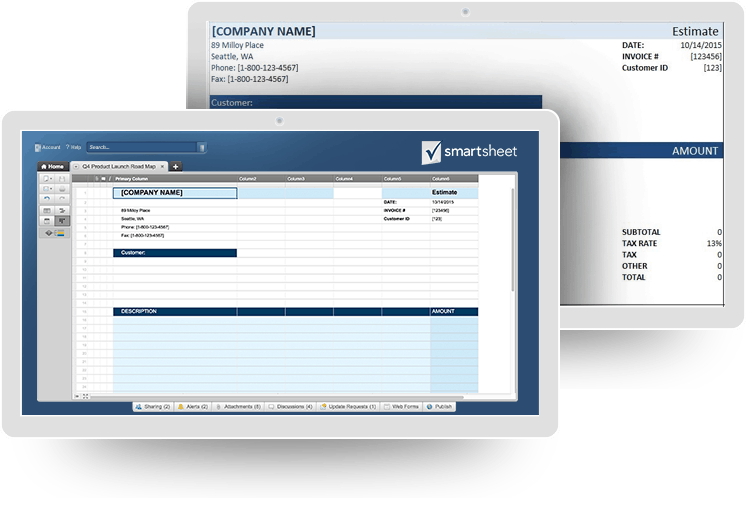
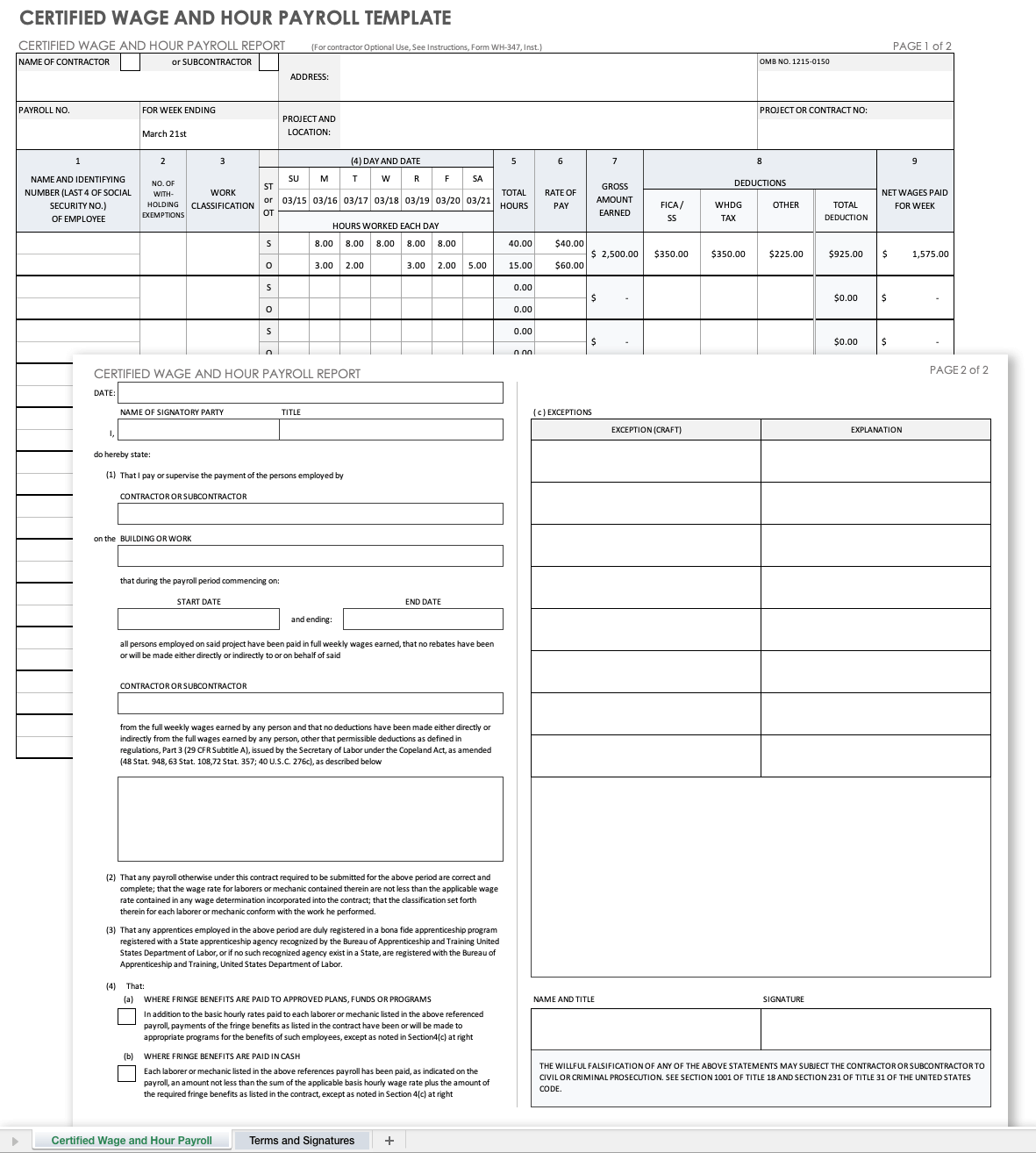
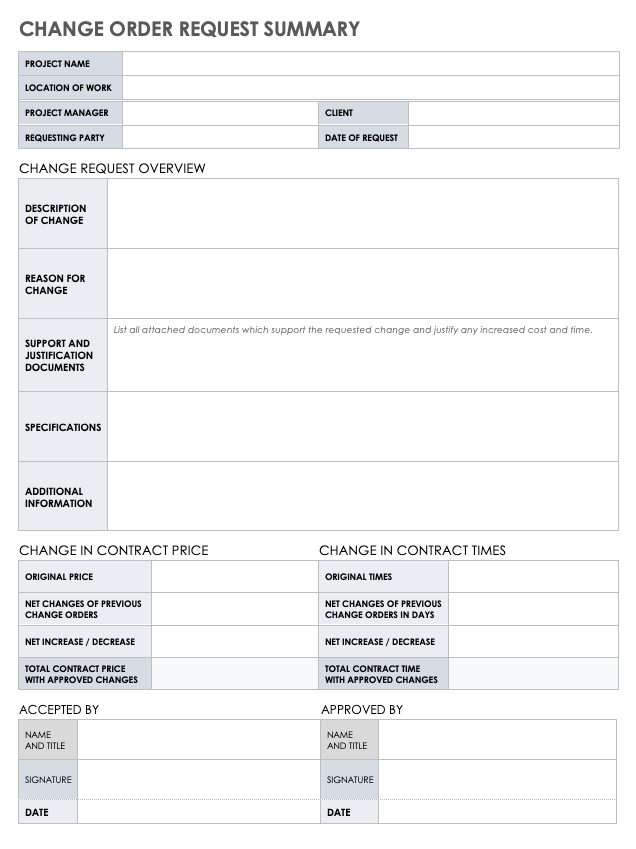
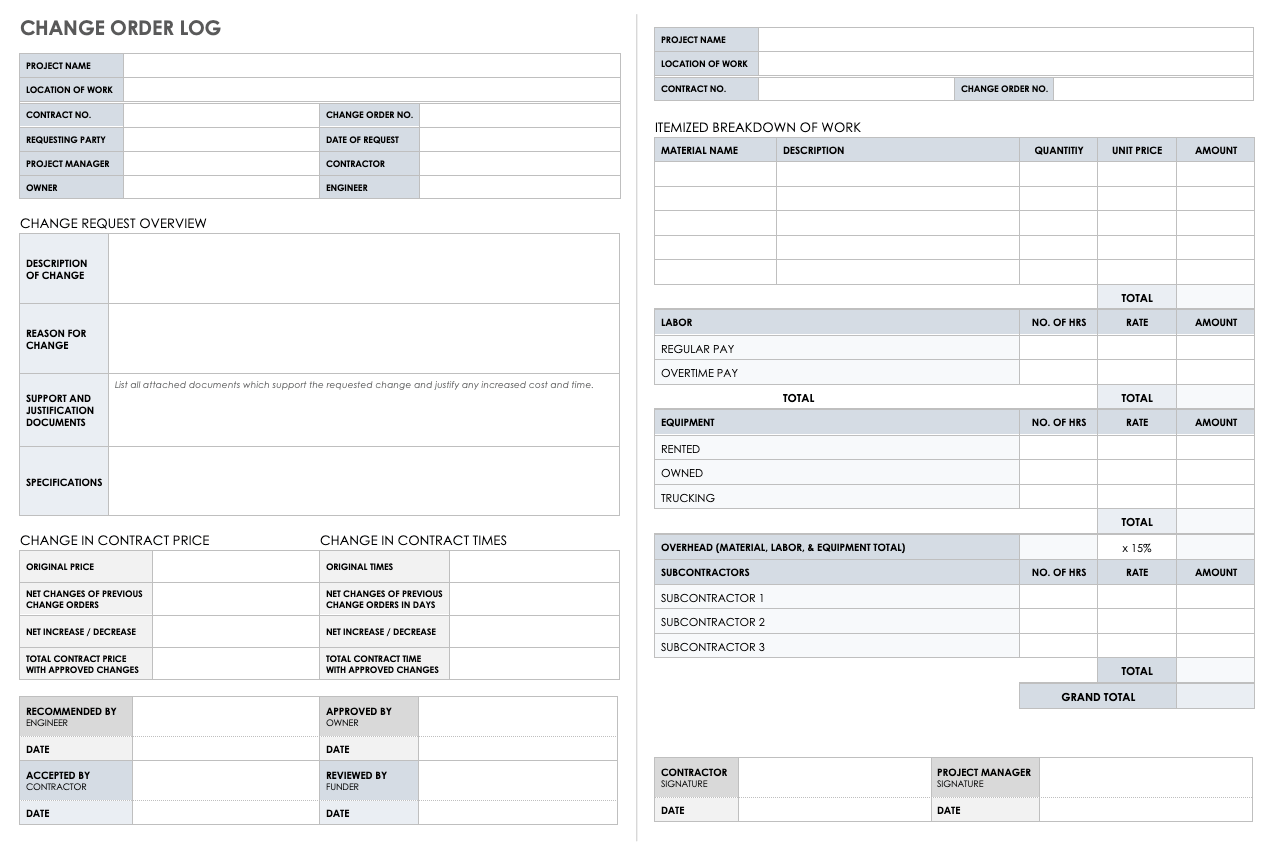

0 Response to "How To List Item From Drawing For Estimates From Contractors"
Post a Comment